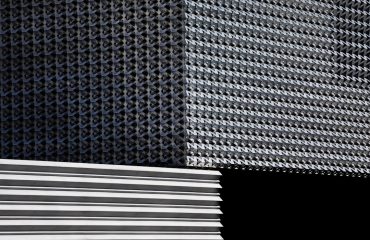body {
font-family: sans-serif;
line-height: 1.6;
}
h1, h2, h3 {
color: #333;
}
Steel, the backbone of countless structures and machines, demands rigorous inspection to ensure safety and longevity. Ultrasonic testing (UT) stands as a powerful, non-destructive technique for evaluating the integrity of steel components, revealing hidden flaws that could compromise structural soundness. This comprehensive guide delves into the world of ultrasonic testing in steel inspection, exploring its principles, applications, and limitations.
The Fundamentals of Ultrasonic Testing in Steel
Ultrasonic testing leverages high-frequency sound waves (typically above 20 kHz) to detect internal flaws in materials. A transducer, acting as both a transmitter and receiver, emits ultrasonic pulses into the steel. These waves travel through the material, reflecting off discontinuities like cracks, voids, inclusions, or delaminations. The time it takes for the reflected waves to return to the transducer, along with the amplitude of the reflected signal, provides crucial information about the size, location, and nature of the flaw. The process relies on the principle of acoustic impedance – the resistance a material offers to the propagation of sound waves. Differences in acoustic impedance at the interface between a flaw and the surrounding steel cause reflections, which are then captured and analyzed.
Common Applications of Ultrasonic Testing in Steel Structures
The versatility of UT makes it applicable across a vast range of steel inspection scenarios. Some common applications include:
- Welding Inspection: Detecting flaws like porosity, cracks, and incomplete fusion in welds is critical for ensuring structural integrity. UT excels in this area, offering detailed images of weld zones.
- Thickness Measurement: Determining the remaining thickness of steel components, particularly in corrosion-prone environments, is essential for preventing failures. UT provides precise thickness measurements, even in hard-to-reach areas.
- Crack Detection: Identifying fatigue cracks, stress corrosion cracks, and other types of cracks is crucial for preventing catastrophic failures. UT’s sensitivity allows for the detection of even small cracks.
- Material Characterization: UT can be used to assess the grain size, texture, and other material properties of steel, providing insights into its overall quality and performance.
- Pipeline Inspection: The inspection of pipelines for corrosion, erosion, and other defects is vital for preventing leaks and environmental damage. UT is frequently employed for both in-service and pre-service pipeline inspections.
Advantages of Ultrasonic Testing over Other Methods
Compared to other non-destructive testing (NDT) methods, UT offers several key advantages:
- High Sensitivity: UT can detect very small flaws, often smaller than those detectable by other methods.
- Depth Penetration: UT can penetrate deep into the material, allowing for the inspection of thick steel components.
- High Accuracy: UT provides accurate information about the size, location, and orientation of flaws.
- Versatility: UT can be used on a wide range of steel components and geometries.
- Portability: Portable UT equipment is available, allowing for on-site inspection in various locations.
Limitations of Ultrasonic Testing in Steel Inspection
Despite its advantages, UT has some limitations:
- Surface Preparation: Proper surface preparation is often required to ensure good acoustic coupling between the transducer and the steel surface. Rough surfaces can hinder accurate testing.
- Operator Skill: The interpretation of UT results requires skilled and experienced operators. Accurate interpretation is crucial for reliable assessment.
- Complex Geometries: Inspecting components with complex geometries can be challenging, requiring specialized techniques and transducers.
- Cost: While cost-effective for many applications, the initial investment in equipment and training can be significant.
- Accessibility: Access to the inspection area may be limited in some cases, hindering the ability to perform UT.
Advanced Techniques and Future Trends in Ultrasonic Testing of Steel
The field of ultrasonic testing is constantly evolving, with new techniques and technologies enhancing its capabilities. Some notable advancements include:
- Phased Array Ultrasonic Testing (PAUT): PAUT utilizes multiple elements within a single transducer to electronically steer and focus the ultrasonic beam, providing greater flexibility and control over the inspection process. This allows for faster scanning and improved detection of flaws in complex geometries.
- Time-of-Flight Diffraction (TOFD): TOFD is a technique that uses the diffracted waves from the tips of flaws to determine their size and location. This is particularly useful for detecting cracks that are difficult to detect using conventional UT methods.
- Automated Ultrasonic Testing (AUT): AUT systems automate the scanning and data acquisition process, improving efficiency and reducing human error. This is especially beneficial for large-scale inspection projects.
- Artificial Intelligence (AI) and Machine Learning (ML): The integration of AI and ML into UT systems is enhancing the ability to automatically detect and classify flaws, leading to improved accuracy and faster analysis.
The future of ultrasonic testing in steel inspection promises even greater accuracy, speed, and efficiency, driven by ongoing technological advancements and the increasing demand for reliable and robust steel structures.
Tags: Ultrasonic Testing, Steel Inspection, NDT, Non-Destructive Testing, Welding Inspection, Steel Fabrication




